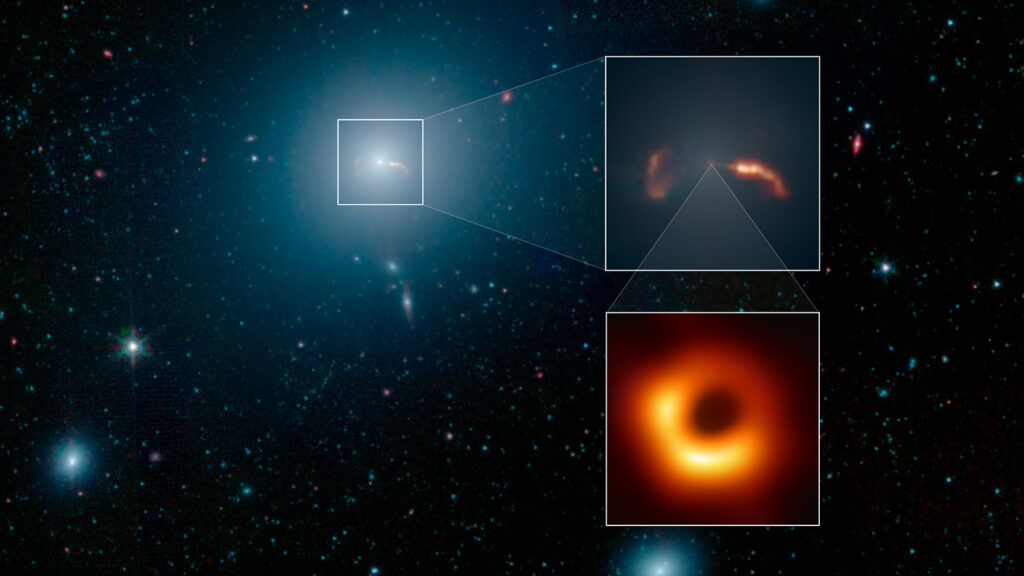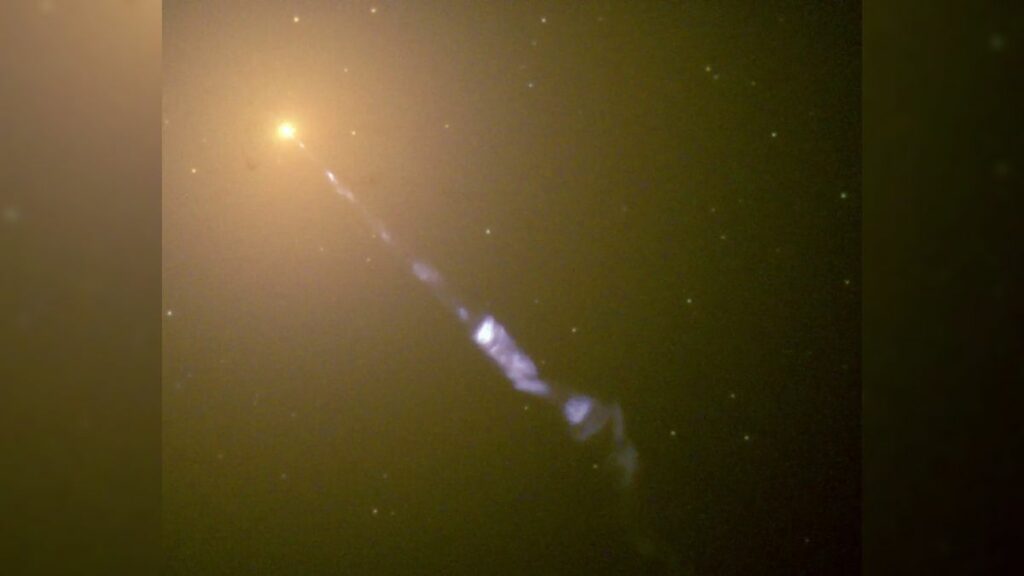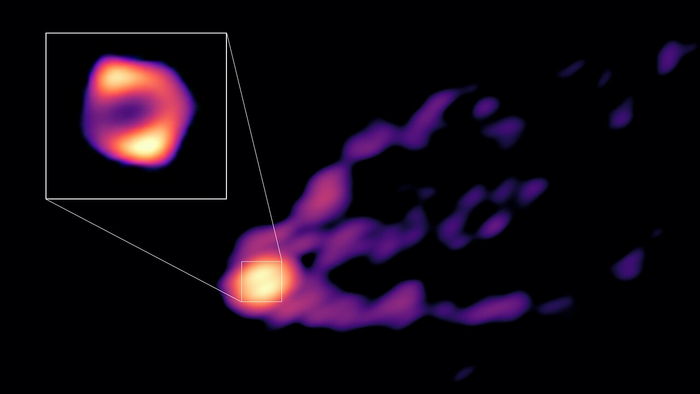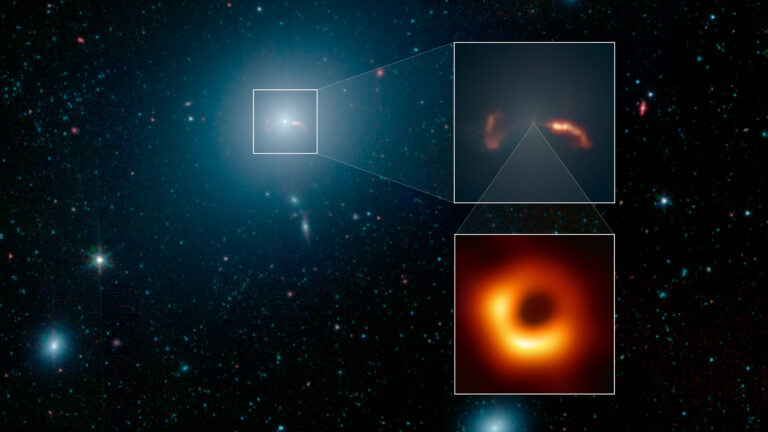Scientists Believe They’ve Uncovered the Reason Behind the ‘Lightsaber’ Energy Jets Emanating from the First-Ever Imaged Black Hole, Surpassing the Size of the Milky Way.
After a closer examination of the supermassive black hole M87*, researchers may have unraveled the mystery of how fast-spinning black holes release energy through massive energy jets.

For nearly five decades, scientists have grappled with the enigma of how black holes release energy into their surroundings. Recently, a team of researchers may have uncovered the solution to this cosmic mystery by examining the colossal, lightsaber-like jets emanating from one of the most colossal and extensively studied black holes in the universe.
While it is commonly believed that nothing, not even light, can escape the gravitational grasp of a black hole, this notion is not entirely accurate. Since the late 1970s, scientists have posited that as a black hole undergoes rapid rotation, it could shed rotational energy through massive energy jets projecting perpendicularly from the black hole’s event horizon—the boundary beyond which nothing can escape the gravitational pull. (Information escape through complex gravitational “twisting” is a distinct puzzle.) Despite the repeated detection and even imaging of these energy jets, the precise mechanism of energy transfer between spinning black holes and their highly charged outflows has eluded scientists.
Addressing this challenge, scientists from Princeton University have directed their focus toward M87*—a supermassive black hole residing at the core of the expansive Messier 87 galaxy, boasting a mass equivalent to 6.5 billion suns and positioned 53 million light-years away from Earth.

M87* stands out as one of the extensively studied black holes in the universe. In 2019, it achieved a significant milestone as the first black hole ever directly photographed, and in April of the current year, scientists captured an image of the formation of energy jets around this cosmic giant for the first time. Furthermore, in September, researchers successfully measured the rotation of M87* by observing its axial wobbling—a groundbreaking confirmation of a black hole’s spin.
The recent study, published on Tuesday (Nov. 14) in The Astrophysical Journal by the Princeton team, delves into the formation process of M87*’s energy jets. Describing these energy jets as “essentially million-light-year-long Jedi lightsabers,” the researchers highlight their extraordinary length, extending up to approximately ten times the size of the Milky Way. Co-author Alexandru Lupsasca, a former Princeton researcher and current professor at Vanderbilt University, who also received this year’s New Horizon Prize in Physics, emphasized the jets’ capability to release “truly insane” amounts of energy.

Yet, the crucial question remains: how is the entirety of the energy propelled away from the black hole? The team discovered that the rotation of M87* is impeded by drag resulting from spiraling magnetic field lines, originating from accretion disks. These disks, composed of swirling rings of superheated plasma enveloping the event horizon, intersect with the black hole. As the black hole’s spin decelerates, the surplus energy is unleashed into the jets.
While this phenomenon had been predicted previously, the researchers, for the first time, meticulously delineated the intricate twisting of these imperceptible lines. They achieved this through advanced computer models based on data gathered by the Event Horizon Telescope.
The results also indicate that not every black hole may undergo energy loss through this mechanism. The team demonstrated that the direction of the spiraling magnetic fields determines the energy’s trajectory. If the fields surrounding a different black hole spiral in the opposite direction, the energy would be redirected back toward the event horizon and absorbed by that specific black hole, as per the team’s findings.
Despite the close alignment of the new model with observations of the jets, the team acknowledges the possibility that an alternative factor, such as an unidentified source of rotating plasma, might be responsible for powering the jets. Thus, at present, the mystery technically remains unresolved.
“I believe it’s highly probable that the black hole powers the jet, but we cannot definitively prove it,” stated Lupsasca. “Yet.”
Nonetheless, the team remains optimistic that forthcoming observations from next-generation telescopes could offer conclusive evidence to support their findings.
This article is republished from LiveScience under a Creative Commons license. Read the original article.
Do not forget to share your opinion with us to provide you with the best posts !





0 Comments